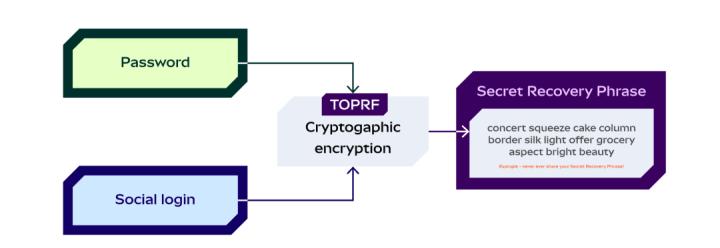
Author: Roland Roventa
Trump's victory sparked a revival wave of , which could help Ethereum (accounting for 63% of the global total locked-in value) achieve a breakthrough with this momentum. Since the announcement of the US presidential election results, the Ethereum ecosystem has continued to outperform expectations.
However, Ethereum's expansion route based on s, although crucial for scaling, faces a significant challenge: fragmentation. The current ecosystem is in a winner-take-all state, leading to liquidity, user attention, and user communities being scattered across isolated chains. To fully unleash the potential of the resurgence of , Ethereum must address these fragmentation dynamics, and Ethereum needs to solve the current fragmentation problem to build a more unified and open network.
Bridging the Gap: Solving Ethereum's Fragmentation and Liquidity Challenges
Puffer Finance's innovative solution - UniFi, directly addresses Ethereum's fragmentation challenge. We believe that once the market recognizes that Puffer is not just another Liquidity Reinforcement Token (LRT), but an innovative infrastructure solution, its performance will exceed expectations.
Puffer's Past: Puffer was initially a leading LRT protocol, focusing on providing decentralized staking solutions.
Puffer's Present: Puffer has now evolved into an Ethereum-centric unified solution. Puffer has evolved from the first native Liquidity Reinforcement Token protocol to a comprehensive Ethereum-integrated expansion ecosystem, consisting of three core components:
1.Decentralized Liquidity Reinforcement Token (LRT) Protocol
Puffer's flagship product, with anti-slashing features, providing high yields and security, supporting decentralized restaking in the Ethereum ecosystem.
2.UniFi Based Rollup Stack
A based serialization solution that enables seamless interaction between s and between and , supporting efficient cross-chain atomic composability.
3.UniFi Pre-Confirmed AVS
The industry's first pre-confirmed AVS, providing near-instant transaction finality for and transactions, significantly improving the speed and reliability of the Ethereum network.
Through the UniFi based rollup stack, Puffer Finance is transforming Ethereum's fragmentation into a positive for the ecosystem.
Puffer UniFi Based Roll-up Stack - What is it? How does it work?
What are Based Rollups?
are an advanced scaling approach that directly integrates with Ethereum's shared sequencer, without relying on the centralized sequencers (such as Optimistic or ZK-Rollups) commonly used by other s. The core idea was first proposed by Justin Drake in a research paper in March 2023:
"Based rollups, i.e. L1-ordered rollups, are rollups where the ordering is driven by the underlying L1. Specifically, based rollups refer to the next L1 proposer being able to collaborate with L1 searchers and builders to include the next rollup block in the next L1 block, permissionlessly." - Justin Drake
For non-technical readers, the above description may seem complex. In simple terms, directly verify transactions on , fully leveraging the efficiency of Ethereum's existing mechanisms. In contrast, other common aggregation schemes (such as Optimistic & ZK) typically first validate transactions on , then submit them to .
By utilizing (leveraging Ethereum validators for ordering), the following advantages can be obtained:
●Inherit Ethereum network's activity and decentralization: Ensuring reliability, not subject to single points of failure.
●Simplified infrastructure: No need to run a separate sequencer.
●Faster execution speed: Achieve faster transaction finality through pre-confirmation (to be explained later).
●Aligned with L1 economic incentives: Creates new revenue opportunities for existing validators through non-extractive MEV (Maximum Extractable Value).
●Lower operational costs: As transaction ordering is handled by .
Based Rollups > Optimistic Rollups
tl'dr:
Feature | Based Rollups | Optimistic Rollups |
Ordering Mechanism | Managed by Ethereum's decentralized validators | Centralized sequencer |
Confirmation Time | Pre-confirmation mechanism, near-instant confirmation (within 100ms) | Longer, due to fraud proof delays |
Security Model | Inherits Ethereum 's security and decentralization | Assumes validity; relies on fraud proofs |
Interoperability | Synchronized composability across and Rollups | Limited, often asynchronous due to verification |
Composability | Unified liquidity between and Rollups | Fragmented liquidity between Rollups |
User Experience | Seamless experience, leveraging pre-confirmation to improve speed | Slower, affected by fraud proof verification |
By optimizing the underlying transaction ordering process, costs can be reduced, and speeds can be improved, while retaining Ethereum network's inherent security and decentralization.
Puffer is Based
Puffer UniFi is an Ethereum-based , realizing the creation of application chains through its technology stack.
It solves the problem of Ethereum's liquidity fragmentation by implementing synchronized composability. Transactions on UniFi can directly interact with other without the need for bridging, creating a unified liquidity and application layer. Developers can easily launch their own application chains, capture transaction fees, and leverage the shared liquidity.
UniFi's goal is to bring atomic composability to the Ethereum chain - redefining the possibilities of on-chain interactions. Through atomic composability, UniFi will allow and to achieve smooth, integrated interactions within a single Ethereum block. For example, a user or protocol can deposit assets from to UniFi, execute complex operations (such as swapping or liquidity mining), and then withdraw the assets back to within the same 12-second Ethereum block. This is not only fast, but also a significant breakthrough in blockchain interoperability.
Puffer is not competing with , but collaborating with it in an integrated way to expand its functionality.
How does it work?
Inspired by the research collaboration with Justin Drake, Puffer UniFi has adopted Trusted Execution Environments (TEEs) in its processing stack. To achieve real-time proofs, Puffer plans to use TEEs as a temporary auxiliary tool. The implementation of real-time proofs can significantly improve interoperability. Once Zero-Knowledge Proof (ZK-Proof) technology reaches sufficient speed, the prover will be able to transition from relying on trusted hardware to a fully ZK-based solution.
Puffer UniFi Architecture Analysis

Architecture Overview - Puffer's UniFi Pre-Confirmed AVS provides users with execution confirmation services. When users interact through UniFi, they can experience sub-second transaction speeds. In the UniFi Universal Rollup, native yield tokens can be used as gas tokens.
The consensus layer, data availability layer, and settlement layer are all handled by the base layer (, i.e., Ethereum). The Rollup focuses on the execution layer functionality.
This is the unique aspect of Puffer's application chains (app-chains).
Why is this important?
Puffer is leveraging to build its own app-chains, enabling seamless integration of EVM protocols. This provides an opportunity for everyone in the ecosystem to participate and benefit, whether individual validators or large dApps, as they can all benefit from a faster, more efficient, and more decentralized Ethereum. Ethereum's fragmentation problem has existed for too long, and now is the time to change this.
Ecosystem Overview

Growth will be phased:
Phase 1: Puffer will introduce based rollups to users and developers. Protocols that are not yet ready to run their own application chains can be deployed directly to UniFi.
Phase 2: UniFi will launch an SDK, allowing any dApp developer to quickly build and deploy their own application chain in a simplified manner.
UniFi's Preconfirmed AVS
UniFi provides near-instant execution confirmation through preconf technology. This is not just an improvement in speed, but a completely new Ethereum scalability solution. Preconf technology solves Ethereum's fragmentation problem while providing extremely fast transaction confirmation.
How is it achieved? Since Ethereum's 12-second block time limit hinders fast transaction finality, preconf becomes crucial for improving the user experience. To solve this problem, Puffer has developed a proprietary preconfirmed AVS technology that provides a near-instant (around 100ms) transaction confirmation guarantee, ensuring that the transaction will be included in the next block. This innovation significantly boosts the speed and reliability of the based rollup ecosystem.
How does it work?
Preconfs come in two types: Execution Preconfs and Inclusion Preconfs. Both can be used to provide users with faster transaction confirmation on L1 or L2: Execution Preconfs have the advantage of providing users with a final and guaranteed commitment, including state confirmation after the transaction execution. For example, it can confirm the execution price of a transaction, significantly improving the user experience.
Implementing Execution Preconfs on L1 poses certain challenges; however, Execution Preconfs on L2 effectively solve this problem. Puffer UniFi AVS leverages this capability to provide an even more optimized user experience.
Preconf's Slashing Mechanism: Preconfs represent a commitment from the proposer (validator or authorized proposer) to the user. If this commitment cannot be fulfilled, they should be penalized, such as through Slashing. Restaking protocols like EigenLayer play an important role in providing Slashing guarantees for preconfs. Notably, Puffer UniFi's Preconfirmed AVS is the first of its kind to run on EigenLayer.
Puffer UniFi: A Catalyst for Ethereum's Next Chapter - Unification
UniFi's cross-composability is a disruptive innovation. Cross-Rollup interactions are like operating on a unified chain, without the need for L2 bridges (which everyone dislikes), thereby reducing costs and mitigating security risks associated with asset transfers. UniFi's approach achieves liquidity unification, allowing developers and users to seamlessly interact across chains, unprecedented in enhancing Ethereum's liquidity and user experience.
Significance for Developers: UniFi provides developers with a unique opportunity to scale their applications in a unified and low-friction environment. By eliminating centralized sequencers, UniFi significantly reduces operational costs, allowing developers to focus on the product itself without worrying about the complexities of isolating their application on L2. Furthermore, UniFi's architecture makes the deployment of based rollups almost as simple as deploying smart contracts, greatly lowering the barrier to entry for developers and encouraging innovation.
Revenue Upside: How Puffer's Based Rollups and Preconfs Drive Value in the Ethereum Ecosystem
All revenue streams will be converted into the treasury's earnings, governed through the $PUFFER token.
Puffer's enhanced revenue model (note, not just an LRT) fully leverages based rollups and preconf technology to create sustainable value within the Ethereum ecosystem. Through based rollups, Puffer generates sequencing fees, benefiting from the mechanism that allows Ethereum validators to manage transaction ordering. UniFi supports not only seamless interoperability between Ethereum L1 and L2, but also interoperability between L2s, achieving liquidity and composability unification. By integrating sequencing fees into the Ethereum validator network, Puffer captures transaction-based revenue while reinforcing the native value of the Ethereum economy.
Users can also pay preconfirmation tips to prioritize the processing of their transactions. This provides an additional revenue stream for Puffer, alongside transaction inclusion fees, forming a diversified earnings base. These fees and tips will be reinvested back into Puffer's ecosystem, further enriching the value of its native tokens pufETH and unifiETH, while providing additional yield for token holders.
As Puffer core contributor Amir explains:
"If every user pays an additional fee for these preconfs to ensure faster and more reliable transactions on Ethereum, then the AVS will be tightly coupled with every transaction a user makes on Ethereum. This builds a very powerful, efficient revenue-generating AVS that can sustainably output organic yields."
About vePuffer
One of the key factors in enabling the protocol to achieve sustainable long-term price appreciation is the token economics (tokenomics). An excellent protocol must have a well-designed token model, focused on creating value for long-term holders. At Mechanism Capital, we are core focused on token economics design, supporting teams that can innovate and maximize token value capture.
Puffer Finance is introducing vePuffer as an update to its token economics. Its goal is to transfer value to token holders and align incentives across the entire ecosystem. To this end, they have introduced the following innovations:
Decentralized Governance:
vePUFFER empowers the community to vote on the allocation of PUFFER points, aligning with Puffer's decentralization objectives.
Tradable Points:
The ERC20 PUFFER points for the second season support trading, allowing users to capture early yields or make additional purchases, increasing flexibility and arbitrage potential.
Flexible Strategies:
Tradable points enable users to decide whether to hold, sell, or buy based on their personal strategies and market sentiment, enhancing risk management capabilities.
Bribery Market:
The protocol can provide incentives to vePUFFER holders to increase the voting power in their pools, thereby boosting APR and liquidity.
Competitive Protocols:
The bribery mechanism allows protocols to attract votes to increase their APR, incentivizing user participation and creating aligned incentives.
Community-Driven Reward Mechanics:
The vePUFFER model supports governance, speculation, and diversified strategies, empowering users to shape the ecosystem's incentive mechanisms.
Why Puffer's UniFi is Unique: Reshaping Ethereum's Rollup Landscape
By launching UniFi, Puffer has created an opportunity for Ethereum to transition from a fragmented Rollup environment to a unified, positive-sum ecosystem. This ecosystem brings together developers, users, and liquidity in an unprecedented way. The end result? A stronger, more resilient Ethereum capable of serving the needs of billions of users.
Disclaimer: The content of this article does not constitute any investment advice.






